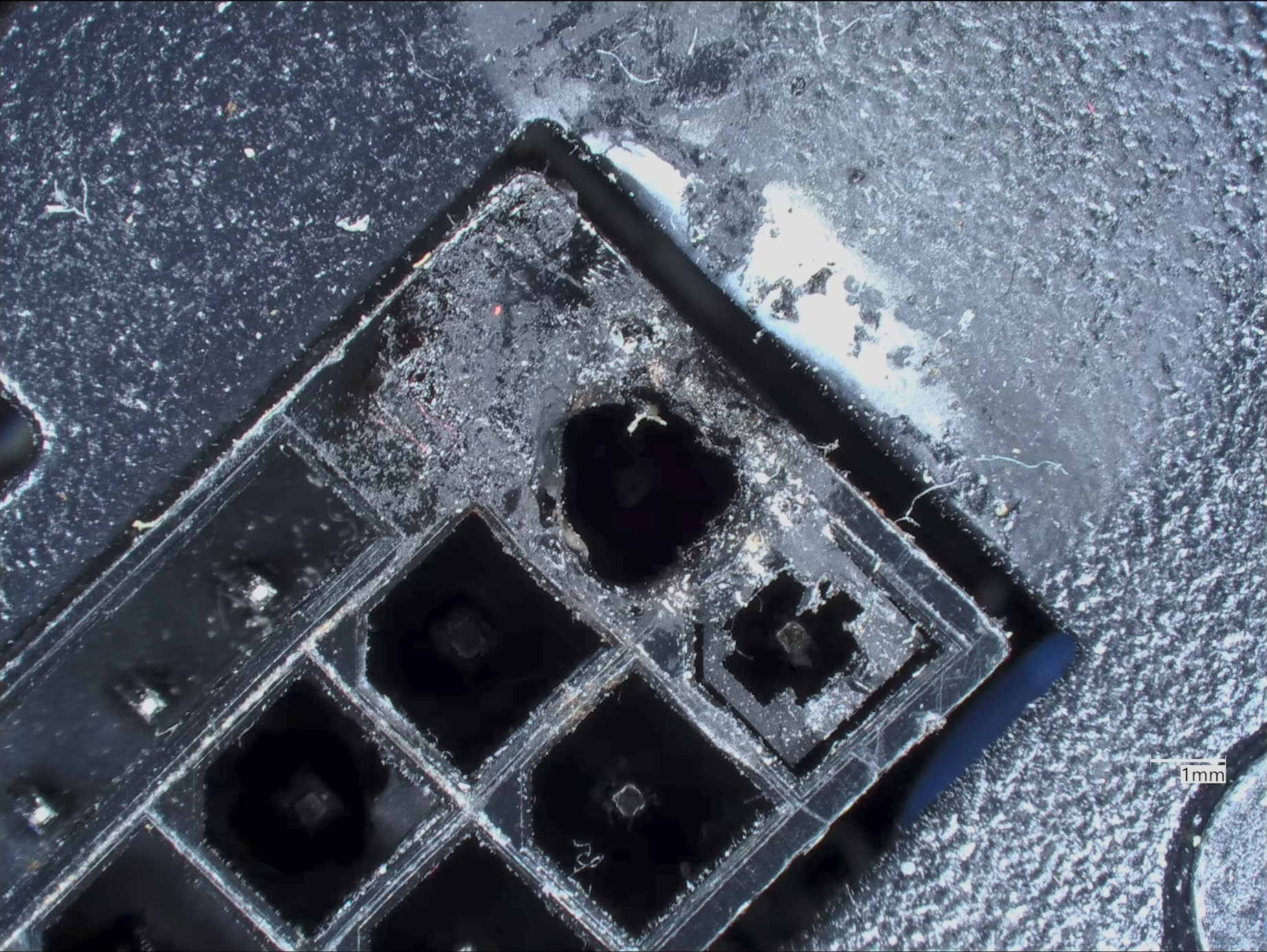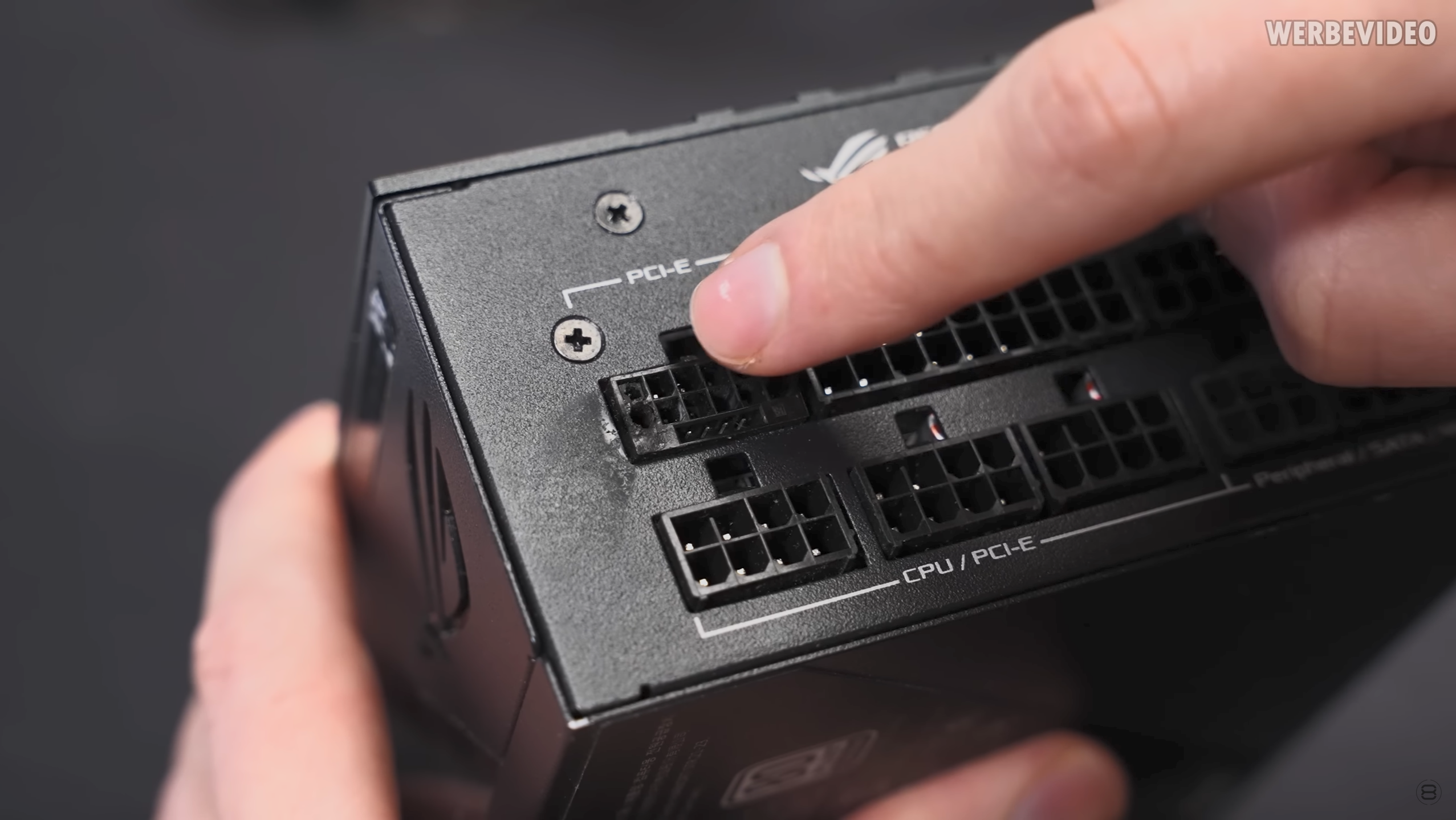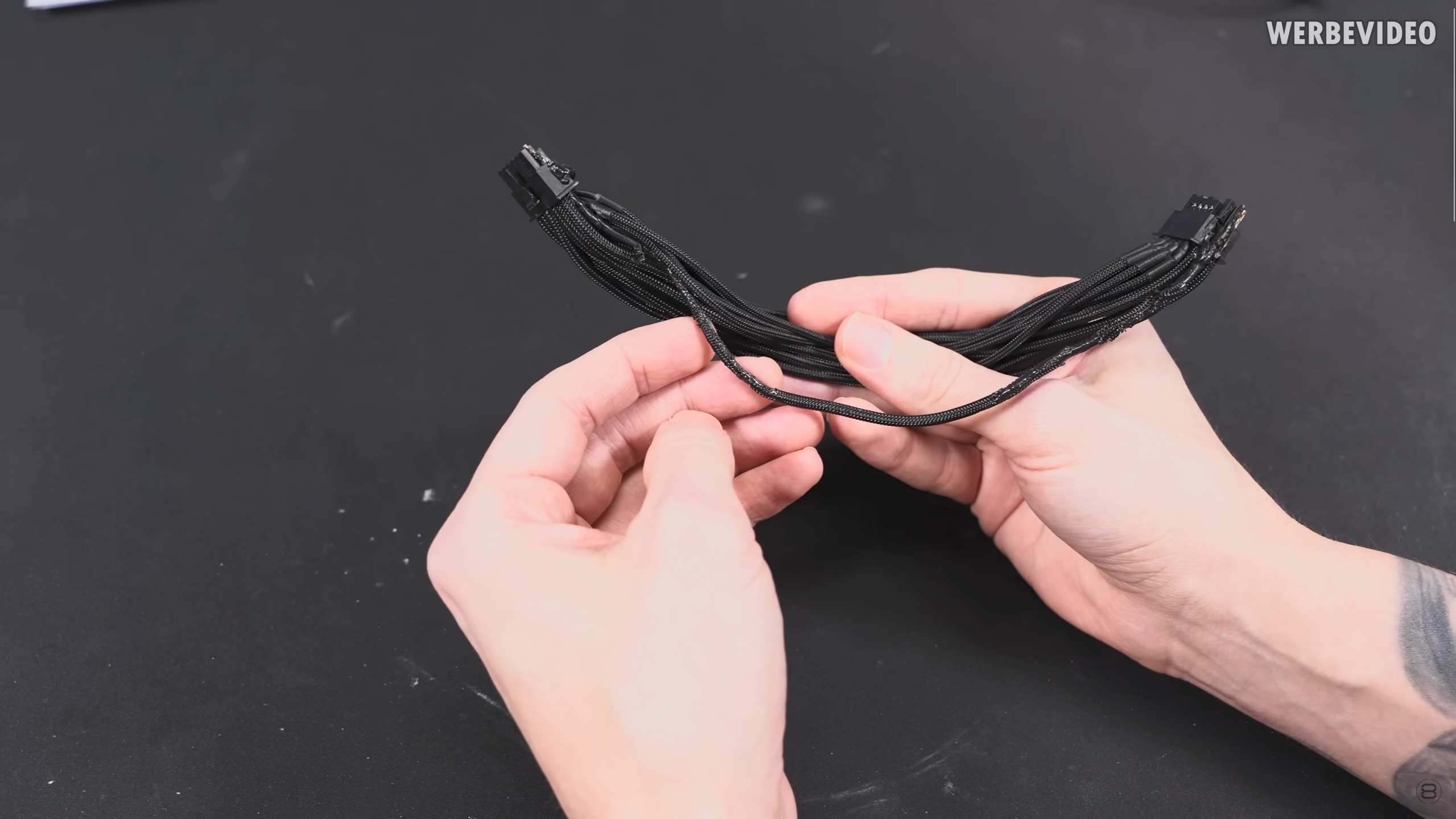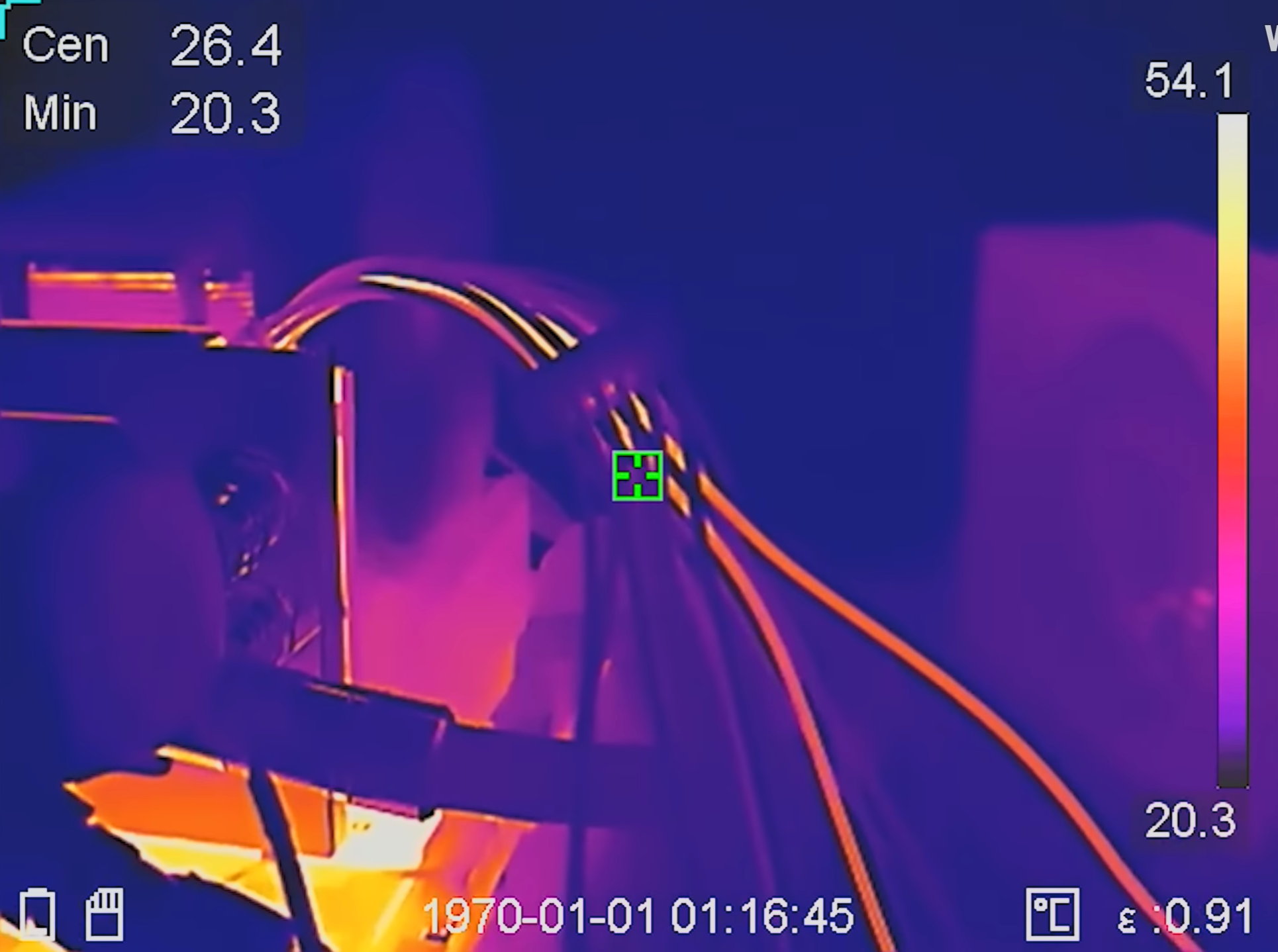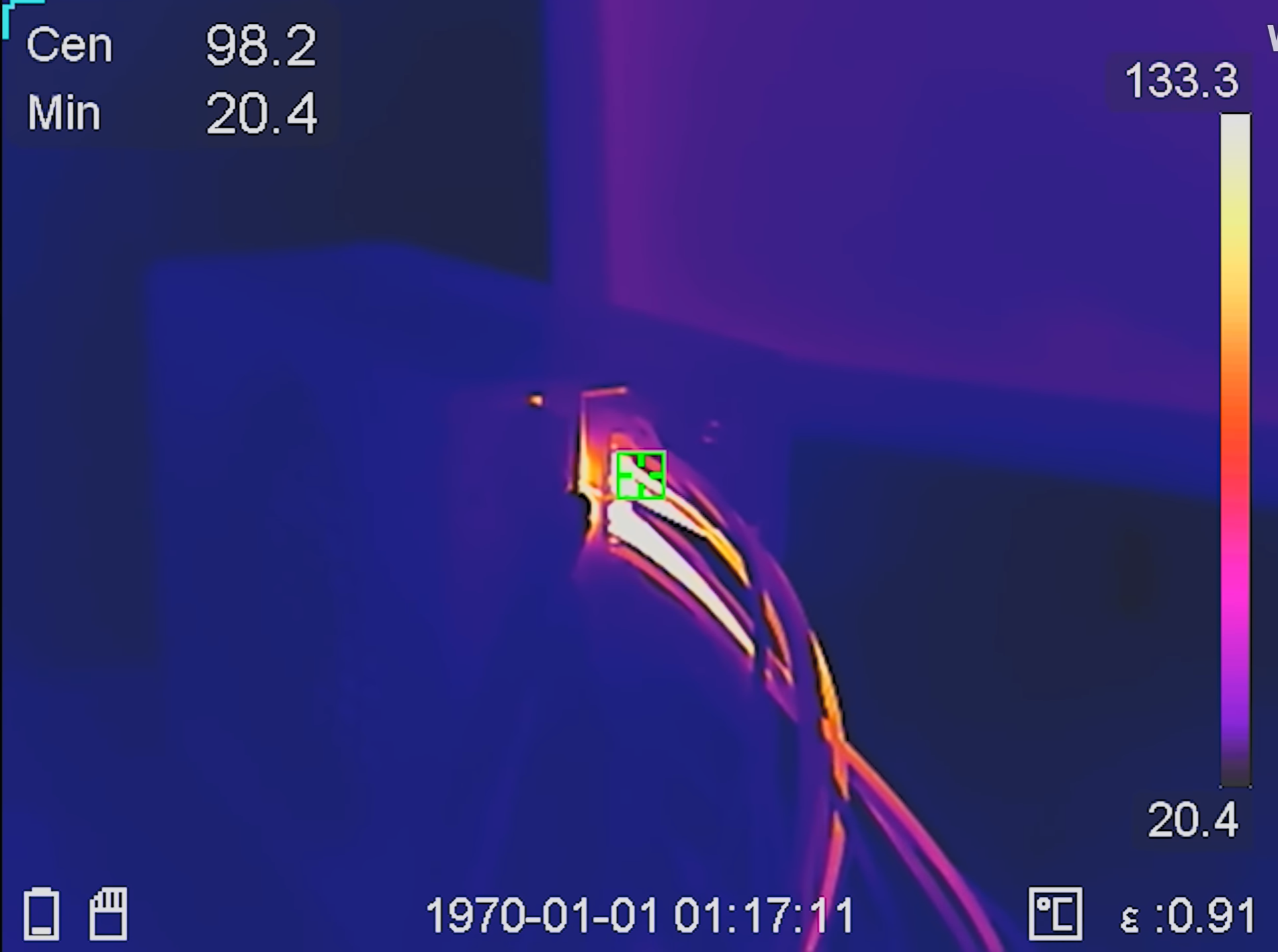RTX 5090 cable overheats to 150 degrees Celsius — Uneven current distribution likely the culprit
One wire was spotted carrying 22A, more than double the max spec.
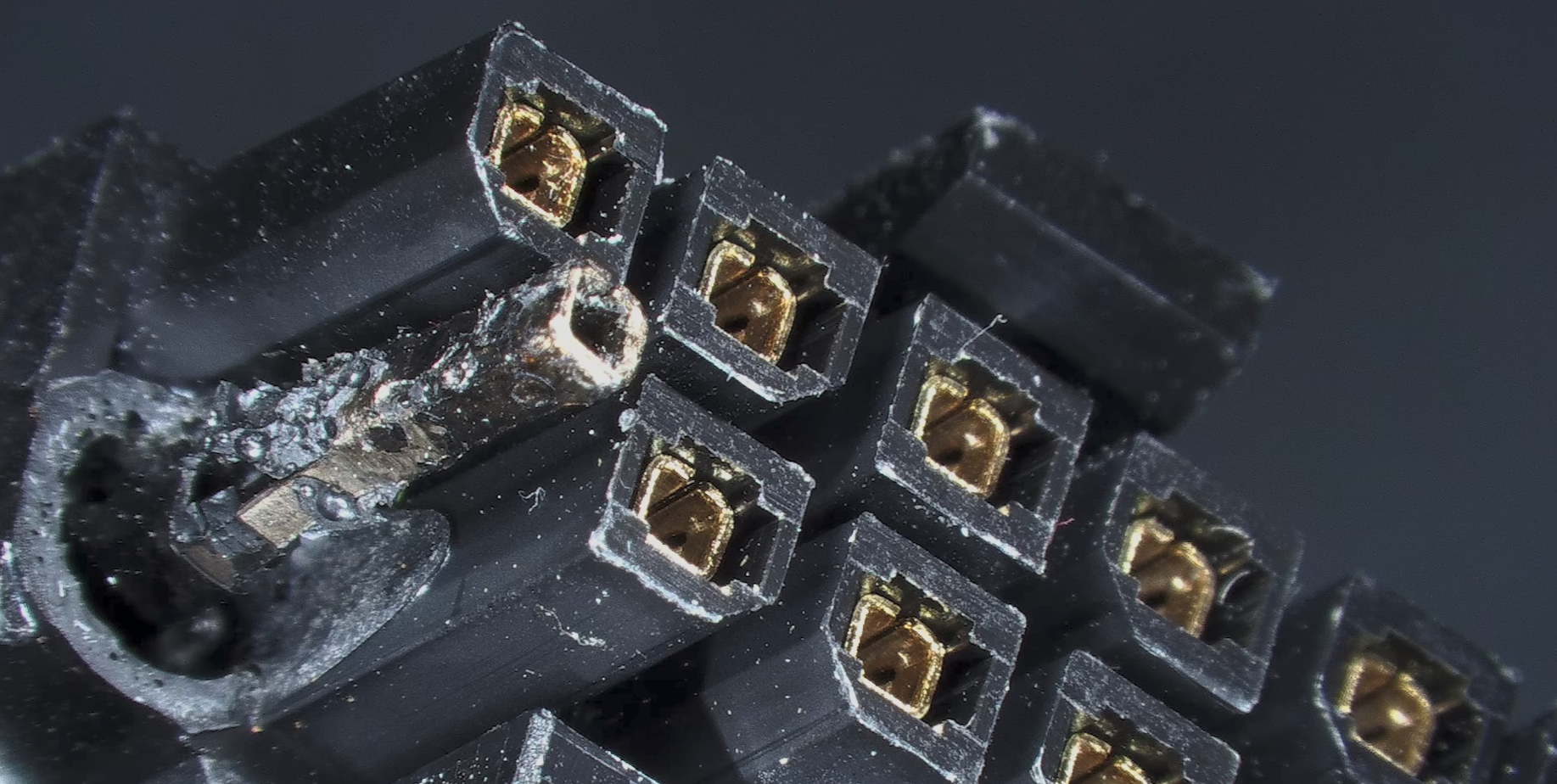
Following an RTX 5090 melting incident just a few days ago, YouTuber Der8auer AKA Roman Hartung contacted the affected party and managed to acquire the damaged graphics card, power cable, and even the PSU for investigation. While the user was absolutely sure there was no user error involved, many blamed using a custom cable from MODDIY instead of official Nvidia adapters for the plastic-melting failures.
On further analysis, Der8auer revealed a critically damaged wire, noting that its condition was far worse than the others. Roman put his own RTX 5090 FE to the test, only to find out that of the six 12V cables, one drew over 22A of current, breaching safety limits with temperatures north of 150 degrees Celsius.
Back when the news broke, the Reddit OP revealed that they were using a third-party 16-pin cable from MODDIY instead of the official one included in the GPU box. This obviously led to some backlash, with many blaming the quote-unquote inferior quality of the cables as the root cause of the damage. Der8auer believes the criticism is unjustified, citing his positive experiences with the cable company and its repute in the DIY community.
In any case, the damage had already been done and now was time to investigate the crime scene. Roman captured high-quality microscopic shots (some attached below) of both ends of the melted cable, the GPU's connector, and even the damaged PSU. While horrifying, the damage is pretty standard considering this is not the first case we're seeing. As noted above, significant damage to one particular wire prompted further investigation. Roman paired his latest custom water block equipped RTX 5090 FE, connected to Corsair's AX1600i PSU, making sure to double-check that the GPU connector is seated properly. The GPU was put through its paces in FurMark, where it was seen drawing around 570W of power.
Just 45 seconds into the test, two of the six 12V wires shot up to nearly 60 degrees Celsius. On the PSU end, Roman witnessed a hotspot of almost 130 degrees Celsius, spiking to over 150 degrees Celsius after just four minutes. With the help of a current clamp, one 12V wire was carrying over 22 Amperes of current, equivalent to 264W of power. For context, the 12VHPWR and 12V-2x6 standard allows for a maximum of 9.5 Amperes through a single pin. The reported current readings for the remaining five wires were: 2A (24W), 5A (60W), 11A (132W), 8A (96W), and 3A (36W) with a moderate margin of error as it's hard to get precise measurements across all wires concurrently.
In short, uneven current distribution leads to dangerously high temperatures which can potentially burn or melt the cable and damage connected components. In isolation, this incident could've been swept under the rug as a one-off, however, Roman's near one-to-one recreation of the problem suggests there's something else at play here.
Stay On the Cutting Edge: Get the Tom's Hardware Newsletter
Get Tom's Hardware's best news and in-depth reviews, straight to your inbox.

Hassam Nasir is a die-hard hardware enthusiast with years of experience as a tech editor and writer, focusing on detailed CPU comparisons and general hardware news. When he’s not working, you’ll find him bending tubes for his ever-evolving custom water-loop gaming rig or benchmarking the latest CPUs and GPUs just for fun.
-
TheyStoppedit People need to get over this "user error" garbage. I have been saying since BEFORE the first case of 4090 melting that this cable was not capable of 600W, not even close. The very first time I laid eyes on that cable, and saw those tiny pins, I KNEW KNEW KNEW KNEW KNEW this was NEVER going to work. The standard 8-pin never had this problem. Its been a reliable standard for years. Suddenly, new cable melts.... "Oh, you're plugging it in wrong" ..... like all of us who spent 15+ years plugging in 8-pin cables suddenly forgot how to plug in a cable. This is straight forward logic. I have been saying it for 3 years now and I will say it again: NVidia, its time to own your mistake, stop blaming the user, and fix the problem. But hey, blaming the user is cheaper than fixing the problem. Hats off to AMD for sticking to the 8-pinReply -
YSCCC Reply
someone in leather jacket: It's that stupid man with a cat tinkering the FE card's problem, our own didn't show this problem ;)Admin said:Investigation of a melting RTX 5090 has revealed a new uneven current distribution problem which leads to dangerously high temperatures.
RTX 5090 cable overheats to 150 degrees Celsius — Uneven current distribution likely the culprit : Read more -
Gururu Watching that cable heat up in thermal imaging is insane. Is it the copper thickness (gauge) that is causing the overheat?Reply -
SomeoneElse23 Reply
Electricity 101 says that current flowing through a conductor will cause the conductor to heat up. How much it heats up depends on the amount of current (more current == more heat), the size of the conductor (larger conductor == less heat), and the resistance of the conductor (resistance causes heat, more resistance == more heat).Gururu said:Watching that cable heat up in thermal imaging is insane. Is it the copper thickness (gauge) that is causing the overheat?
In this case the cable is rated to handle only so much current, and if that is exceeded, dangerous heat conditions occur.
If this happens in your house, ideally a circuit breaker trips because there's too much current flowing for what the wires can safely handle. (Assuming proper wiring to code.)
No such safeguards exist in your PC. No fuse or breaker in the wire, so you get excessive heat that leads to melting and/or fire.
Reducing the current flow or increasing the conductor size would solve this issue. Both are easy to say! -
edzieba The Molex Micro-fit connector has been use industrially for decades, under loads greater than that of mere GPUs, and in far harsher environments.Reply
The question here is why 10 of the 12 pins are not carrying the current they should be. -
Gururu Also just seeing that Gigabyte wants users to add a 4th fan to its 5090 cards. Too funny. Gigabyte 5090Reply -
YSCCC At this point I feel a pitty for those hard core nerds camping for their own gaming use with their life savings.Reply
And another part of me eating popcorn with a can of coke smiling poiletly to the scalpers stocking a few on their ebay selling list of $6000 -
Skramblr ReplyTheyStoppedit said:People need to get over this "user error" garbage. I have been saying since BEFORE the first case of 4090 melting that this cable was not capable of 600W, not even close. The very first time I laid eyes on that cable, and saw those tiny pins, I KNEW KNEW KNEW KNEW KNEW this was NEVER going to work. The standard 8-pin never had this problem. Its been a reliable standard for years. Suddenly, new cable melts.... "Oh, you're plugging it in wrong" ..... like all of us who spent 15+ years plugging in 8-pin cables suddenly forgot how to plug in a cable. This is straight forward logic. I have been saying it for 3 years now and I will say it again: NVidia, its time to own your mistake, stop blaming the user, and fix the problem. But hey, blaming the user is cheaper than fixing the problem. Hats off to AMD for sticking to the 8-pin
You seem out of date. Did you do know the original 12VHPWR spec had an issue where you could partially install it and it would power on and get damaged? (yes, replicated in the lab) The spec was updated and renamed 12V-2x6, which has sense pins that do not connect until fully the plug is seated, thus eliminating the problem. It is now fool-proof (poka-yoke). So the 'user error' issue was real and it has been eliminated with the updated design.TheyStoppedit said:People need to get over this "user error" garbage. I have been saying since BEFORE the first case of 4090 melting that this cable was not capable of 600W, not even close. The very first time I laid eyes on that cable, and saw those tiny pins, I KNEW KNEW KNEW KNEW KNEW this was NEVER going to work. The standard 8-pin never had this problem. Its been a reliable standard for years. Suddenly, new cable melts.... "Oh, you're plugging it in wrong" ..... like all of us who spent 15+ years plugging in 8-pin cables suddenly forgot how to plug in a cable. This is straight forward logic. I have been saying it for 3 years now and I will say it again: NVidia, its time to own your mistake, stop blaming the user, and fix the problem. But hey, blaming the user is cheaper than fixing the problem. Hats off to AMD for sticking to the 8-pin -
DS426 Reply
Current can be reduced by increasing voltage, so that's another fix that many are suggesting. Of course, if the current was distributed much more evenly across the positive 12V wires, this wouldn't have been an issue, so this needs to get resolved first.SomeoneElse23 said:Reducing the current flow or increasing the conductor size would solve this issue. Both are easy to say!
Both ATX 12VHPWR and 12V-2X6 standards need to be abandoned, this generation of big green GPUs being the last to use them. I agree user error isn't the problem in most cases of both 4090's and 5090's getting burned, but the clamp from the 8-pin molex connector needs to come back for one. Then, they need to decide on 48V or 60V, create a fail-close mechanism (circuit breakers are the example but it could be some other electro-mechanical solution) when any pin gets too hot *OR* tell temperature sensors on each pin that signal back to the PSU to shutdown when any of those pins crosses the threshold, and consider increasing connector size (not thinking it's a wire problem but resistance problem at male and female connectors).
Oh, ha, isn't that funny!? Who maintains the ATX standard? INTEL. Original article by Tom's:
https://www.tomshardware.com/news/intel-atx-v3-psu-standardDid they not work with Molex at all on the new connector? Honest question, I have no idea.
This is happening on nVidia's halo gaming GPU's -- WHY are they still letting this go on like this? It's a complete embarrassment and demonstrates to me that they aren't the clearly superior GPU company that so many try to paint them to be. This is a serious safety issue, even including whatever toxic fumes are released when these connectors melt. It's time wasted for those affected and obviously an extremely poor user experience.
That said, buyers took the risk. If you REALLY think you need 4090/5090 levels of performance, just know that you're accepting the risk until nVidia and Intel get their heads out of their a**es.

